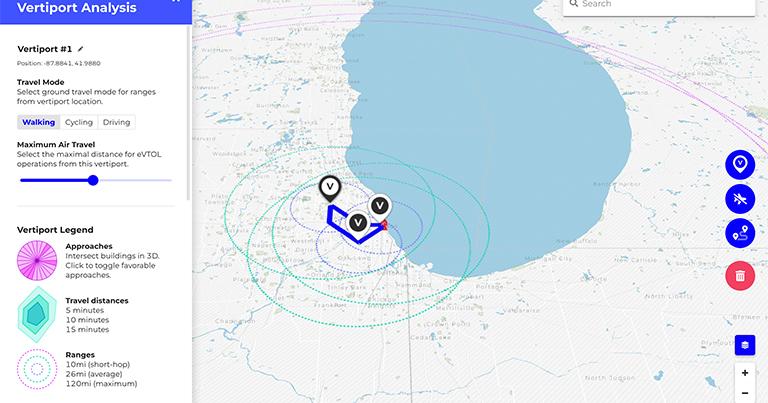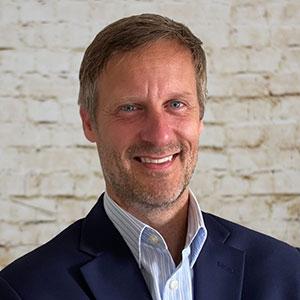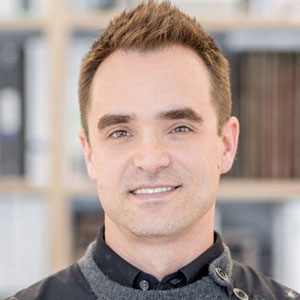As the aviation sector continues to adapt to ever-changing passenger needs and technological advancements, FTE spoke to Dar Group’s Chris Runde who is their Head of Digital Advisory; Thomas Kearns, Digital Innovation Strategist at Perkins and Will; and Richard Palmer, Dar Group’s Sustainability specialist, all of whom are playing a role in shaping the future of the industry.
The brands under the Dar Group umbrella may well be familiar names to many in the aviation industry. It is the largest privately held architecture and engineering firm in the world and combines world-class brands in aviation (Landrum & Brown), mobility (TY Lin), sustainability (Integral), technology (Ross & Baruzzini), retail (Perkins & Will), future energy (Penspen), and more. In fact, Dar Group has planned, designed, constructed, and innovated over 300 airports across six continents – from large international hubs to specialised support facilities. So, how does it see the future of the air transport industry?
Launching and scaling advanced air mobility infrastructure

Advanced air mobility (AAM), and how aviation stakeholders should be preparing for significant developments in this space, is a hot topic for the industry and a big area of focus for Dar Group. The group is working closely on airspace, vertiport, urban mobility and energy planning support to help make AAM a reality. “Launching a scalable AAM operation requires a knowledgeable and holistic approach,” says Chris Runde, Dar Group’s Head of Digital Advisory. “We bring expert brands together across aviation, energy, sustainability, and mobility to help cities, regions, and airports prepare a future-flexible plan for regional and urban air mobility.”
To assist with planning and decision-making, Dar Group has developed Airformer – a platform for visualising AAM operations with an overlay of existing modes of transportation, electric grid nodes, noise, and other critical considerations. Airformer aims to demonstrate how geospatial data can help operators, planners and policy makers study the implications and opportunities for AAM. This is done by analysing the intersections of urban and regional infrastructure, existing transit inter-modalities, and mobility and city planning. The platform creates a storyboard that allows planners to consider multiple options in a dynamic, repeatable way.
Lessons-learned from aviation planning will inform the approach to scaling AAM operations, explains Runde, who also highlights: “AAM is not the same as commercial aviation. AAM is at its core a mobility issue that requires navigating transit, community, and even political issues.” He advises airports and airlines to proactively engage the whole ecosystem and bring experts in mobility, energy, and community planning to position themselves for scalable AAM growth.
Understanding tomorrow’s passenger – ‘The travel industry is not ready for the passengers of 2050’

“The future of travel is human-centric and cannot be achieved through typical, incremental change,” says Runde. “The next generation traveller is carbon-conscious, dynamic, independent, and tech-savvy. The winners of the aviation industry will challenge the status quo and shift the paradigm of ‘processing’ passengers. A design thinking, customer-driven approach is what will differentiate and elevate industry leaders in the coming years.”
To achieve this vision, it is critical to fully understand current passenger trends. Runde points out: “The travel industry is not ready for the passengers of 2050. Future travellers will have different physiological, psychological, technological, and financial tendencies that will impact how we design our spaces and how people interact with them. While we made progress in response to the pandemic with increased self-service and automation, airports and their stakeholders must be more agile to embrace emerging technologies like the metaverse and be future-flexible for unknown solutions. As the physical and digital worlds converge, aviation businesses will lose customers at a rapid rate if the experience is disconnected and outdated.”
Digital twins and the metaverse – linking physical and digital
Indeed, emerging technologies like the metaverse and digital twins are bridging the gap between the physical and digital worlds in the aviation business. “‘Digital twins’ is a term that is both ubiquitous and elusive,” explains Runde, who will be moderating a session on ‘Putting digital twins to work in air transport to optimise planning and operations’ at the upcoming FTE Global 2022 in Las Vegas, 6-9 September. “Every industry is talking about it, yet the value or ROI is questioned across the board.” To help change this perception, Ross & Baruzzini is highlighting the value it brings to the customer, as opposed to focusing primarily on the technology itself. “We are cataloguing and mapping the use cases and value of digital twins across sectors and regions, so the impact is obvious, and the path is clear.”

Meanwhile, Thomas Kearns, Digital Innovation Strategist at Perkins and Will, will present in an FTE Global conference session entitled ‘Putting the metaverse, cryptos & NFTs to work in air transport’. He tells FTE: “As a global architecture firm that designs digital representations of physical spaces for a living, we view immersive experience (e.g. metaverse, AR/VR) as a natural connection of the physical and digital worlds. The application of these technologies is relevant from the early stages of planning through operations.”
Kearns predicts that in time every business will have a metaverse presence. Perkins and Will, together with partners like the gaming giant Epic Games, is building the capabilities for putting high fidelity metaverse solutions in the hands of its clients. The company is currently deploying metaverse proof of concepts for ‘Front of House Digital Twins’ where, as Kearns explains, the enabling technologies of the ‘twin’ connect with XR (extended reality) to bring the metaverse into the physical environment to be experienced by the customers, not just the operators or facility managers.
“We encourage and support a customised strategy for immersive technology built upon organisational goals – such as revenue generation and community engagement – as well as stakeholder demographics to set the foundation for value-driven investments. Airports are unique physical spaces with assets that can transfer to the metaverse. For example, we’re sharing ideas for an airport to digitise its arts gallery for gamification and curated growth of its digital collection,” Kearns explains.
Net zero by 2030
Meanwhile, sustainability is embedded in all corners of Dar Group’s business. The company has joined the World Green Building Council’s Net Zero Carbon Buildings Commitment, which includes reducing emissions, eliminating Scope 2 emissions with renewable energy purchase, and off-setting residual emissions with high quality carbon credits to achieve net zero by 2030. Beyond these commitments, Richard Palmer, Dar Group’s Sustainability specialist, explains that the organisation has identified five key sustainability themes for aviation:
- Zero emissions airports: beyond the net zero airport, aviation clients will reduce their operational emissions through high performance design, district energy systems, electrification, and renewable energy.
- Embodied emissions priority: leading the industry in assessing and reducing embodied emissions in fabric and systems.
- Zero emissions landside transportation: electrification and hydrogen transition of transit systems and charging readiness for the electrification of private cars.
- Zero-emissions airside systems: electrification of GSVs airside equipment.
- The Aviation Fuel Transition: supporting the infrastructure requirements for next generation aircraft fuelling with sustainable aviation fuel infrastructure, electric charging infrastructure and hydrogen.
Just as many complementary brands make up the Dar Group, a variety of inter-connected trends and technologies are re-shaping the aviation industry. You can hear more on all of these topics from Chris Runde, Dar Group’s Head of Digital Advisory, and Thomas Kearns, Digital Innovation Strategist, Perkins and Will, at Future Travel Experience Global 2022 (6-9 September, Las Vegas), the theme of which is ‘Future-proofing air transport’.







